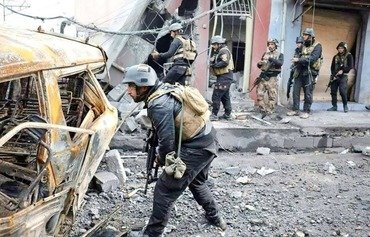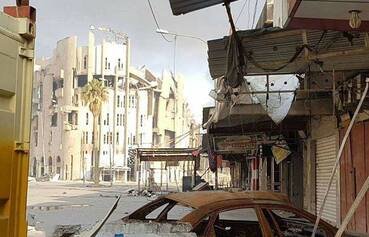When "Islamic State of Iraq and the Levant" (ISIL) militants swept into Mosul in 2014, many did not see the need to cover their faces anymore as they settled in their presumed "caliphate".
But now that Iraqi forces have completed the liberation of the eastern side of the city and are preparing to cross the Tigris River, ISIL fighters in western Mosul have donned their face covers again, officials tell Diyaruna.
They are doing this in an attempt to hide their identities as they anticipate their defeat, said Ninawa provincial council member Khalaf al-Hadidi.
"The military gains achieved by our forces have forced ISIL elements in the western side [of Mosul] to go back to covering their faces," al-Hadidi told Diyaruna, quoting his own sources in west Mosul.
ISIL militants "plan on regrouping later to form secret hideouts and sleeper cells, which would be a source of stress and threaten the safety of the liberated neighbourhoods and the well-being of their inhabitants", he said.
But this attempt would fail, he said, because "locals are able to identify the terrorists and recognise their faces, and they will help security forces to capture, identify and prevent them from blending into the local community".
Overcoming challenges
Officials from the local Ninawa government and military commanders are regularly meeting to discuss military plans for the west Mosul offensive and ways to confront any challenges that may arise, al-Hadidi said.
The majority of Mosul’s population lives in the western part of the city, known for its old neighbourhoods and narrow alleyways and streets.
While east Mosul is bigger in size than west Mosul, the latter is more densely populated, according to Ninawa provincial council security committee member Hassan Shabeeb al-Sabaawi.
"[West Mosul] is made up of 40 neighbourhoods, including al-Dawasa, al-Tawafa and al-Zanjeeli, most of which are small with old houses built side by side," he told Diyaruna.
That side also comprises the Mosul Airport and al-Ghazlani military camp, he said.
"The area is heavily populated with about 700,000 people living there," he added.
The population density coupled with the difficult terrain that hampers the movement of military vehicles pose a great challenge to Iraqi forces, al-Sabaawi said.
Security co-operation
ISIL fighters covering their faces "will not prevent locals from identifying them", he said.
"The locals played a key role in the liberation of eastern Mosul as they helped capture infiltrators among displaced families and we expect further co-operation on their part as security forces advance towards western Mosul," he said.
"Their efforts to hide and blend in will fail," said Lt. Gen. Riyadh Jalal, commander of the Iraqi ground forces.
"We are determined to expel the terrorists from Mosul and declare its full liberation," he told Diyaruna.
The battle for west Mosul will take into account all challenges, such as population density and the narrow battlefield, he said.

!['Islamic State of Iraq and the Levant' militants receive training in Ninawa with their face covered. [Photo courtesy of the Ninawa information centre]](/cnmi_di/images/2017/02/03/7160-Iraq-Ninawa-ISIL-600_384.jpg)






